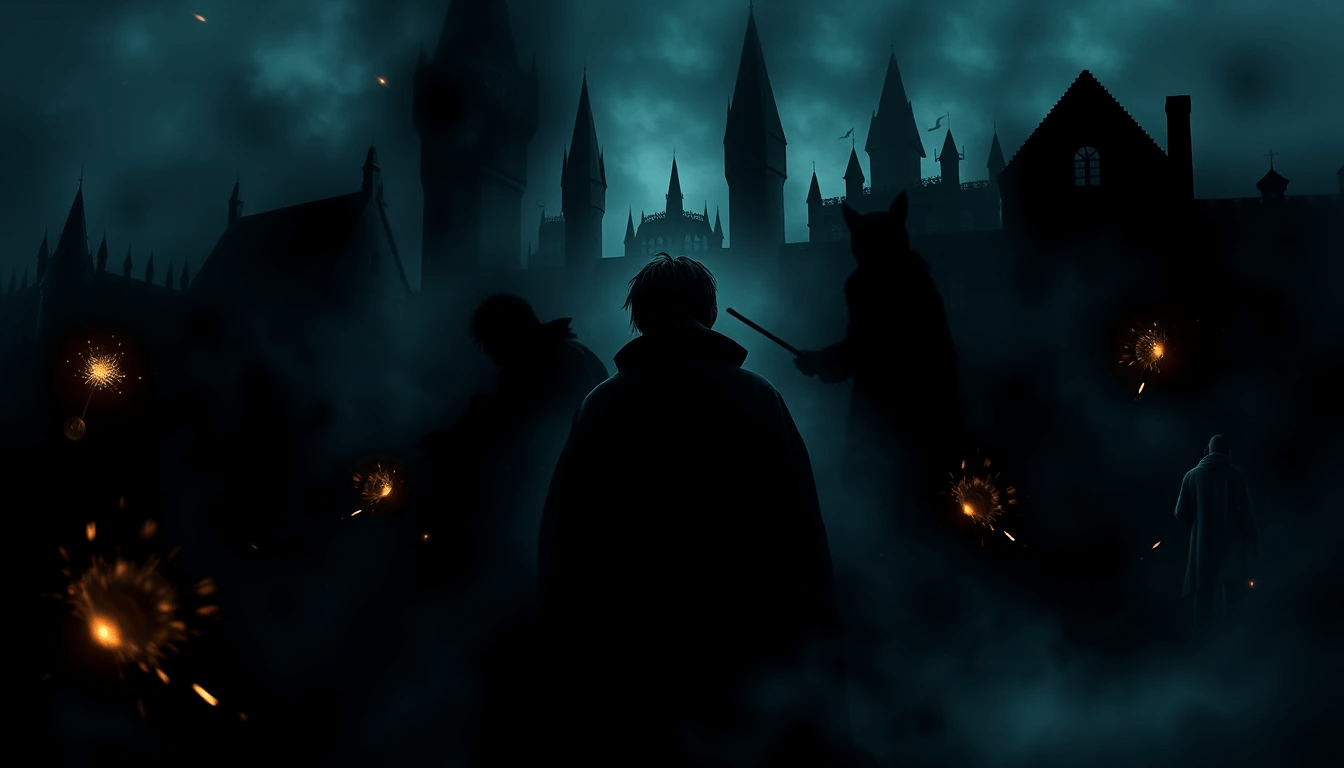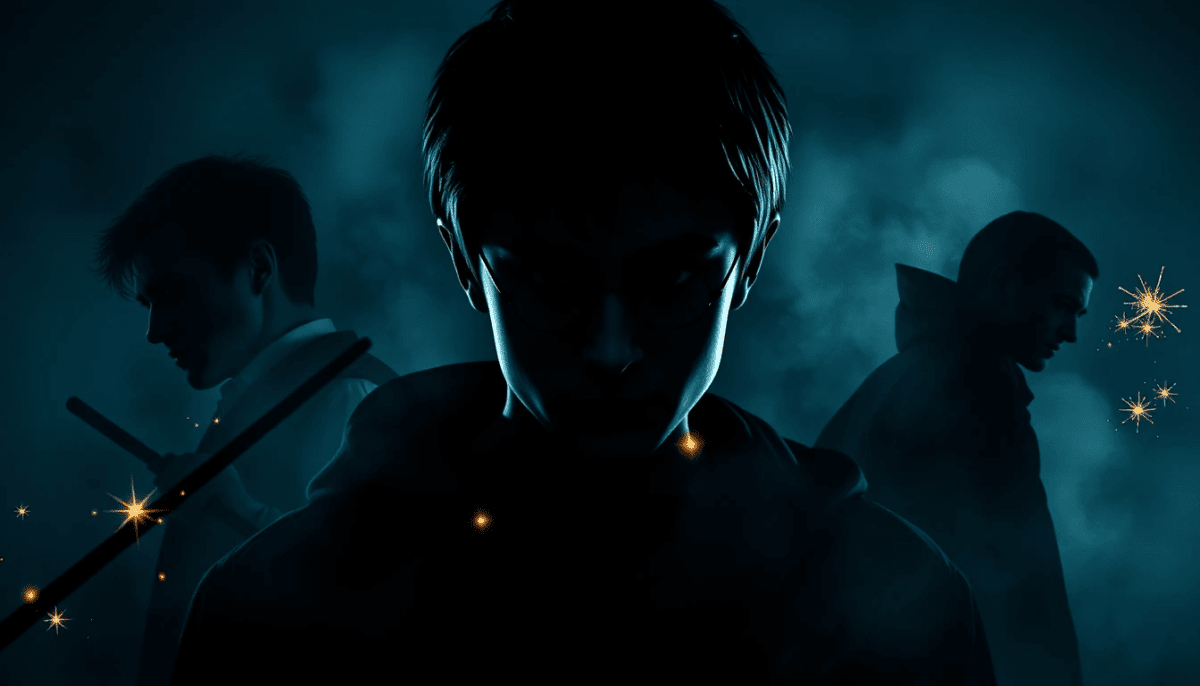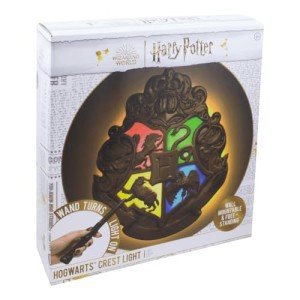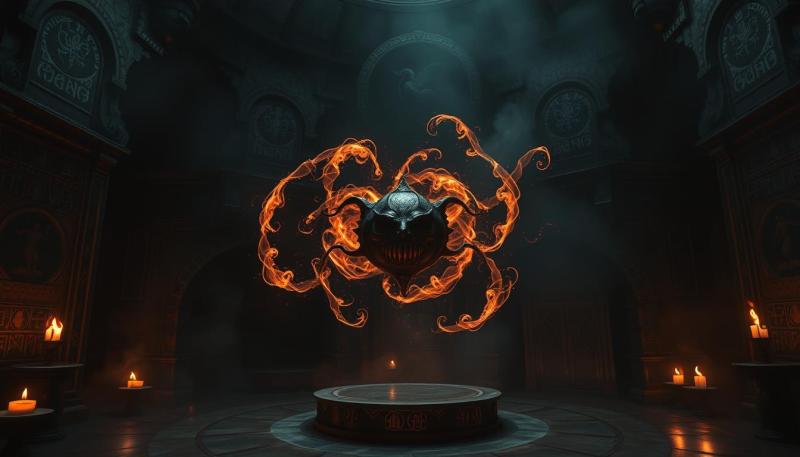The Harry Potter book series contains many dark moments that never made it to the big screen. When filmmakers adapted J.K. Rowling's works, they had to make difficult choices about what content to include. Many disturbing scenes were removed to maintain appropriate ratings for younger viewers.
The books reveal a much grittier wizarding world than what appears in the films. From Fenrir Greyback's predatory behavior toward Hermione at Malfoy Manor to the torture of Muggle families at the Quidditch World Cup, these omitted scenes show a darker reality. Other heartbreaking storylines like Winky's butterbeer addiction and the true condition of Neville's parents demonstrate the emotional depth that was sometimes sacrificed for screentime.
Key Takeaways
- The Harry Potter books contain significantly darker content than the films, which were modified to maintain family-friendly ratings.
- Characters like Fenrir Greyback and even Harry himself show more disturbing behaviors in the original text.
- Emotional storylines involving secondary characters reveal deeper consequences of trauma in the wizarding world.
The Dark Side of Harry Potter Films
Making Difficult Movie Choices and Rating Limits
The Harry Potter movies needed to stay family-friendly while telling a complex story. Film producers faced tough decisions about what dark content to include without pushing beyond PG ratings.
Many disturbing moments from the books were changed or removed completely. This helped the movies reach wider audiences but left out some of J.K. Rowling's deeper themes.
You might not realize how these changes affected the overall story. The movies had to balance showing the darkness of Voldemort's world while keeping content appropriate for younger viewers.
Dark Book Moments Left Out of Films
Fenrir Greyback's Disturbing Behavior
- His predatory interest in Hermione at Malfoy Manor
- Explicit threats about wanting to "eat" her
- Implied darker intentions beyond violence
Winky's Sad Alcoholism Story The house-elf Winky was completely removed from the films, erasing her tragic storyline. In the books, after being dismissed by Mr. Crouch, she:
- Developed a serious butterbeer addiction
- Consumed six bottles daily
- Suffered emotional breakdown at Hogwarts
- Showed how magical creatures experience depression
Death Eaters' Cruelty to Muggles At the Quidditch World Cup, Death Eaters didn't just cause chaos. They:
- Captured the innocent Roberts family
- Suspended them in mid-air
- Twisted their bodies into "grotesque shapes"
- Treated them like puppets for entertainment
Neville's Parents' True Fate While the movies suggest Bellatrix killed Neville's parents, the books reveal a more heartbreaking truth:
- They're alive but permanently insane from torture
- Neville visits them at St. Mungo's Hospital every Christmas
- His mother gives him gum wrappers as gifts, not recognizing him
Tom Riddle's Family Murders The books provide disturbing details about how Tom Riddle:
- Cold-bloodedly murdered his father and grandparents
- Left them with expressions of terror on their faces
- Committed the murders as a student, showing his early evil
Harry Using Unforgivable Curses Successfully The films show Harry failing to use Crucio after Sirius dies. The books show a darker Harry who:
- Successfully uses the torture curse later
- Feels satisfaction watching a Death Eater suffer
- Demonstrates how war changed his character
Fenrir Greyback's Vicious Behavior at Malfoy Manor
Fenrir Greyback shows his truly disturbing nature during the trio's capture at Malfoy Manor. When Harry, Ron, and Hermione are brought in by snatchers, Greyback reveals a side of himself that goes beyond typical Death Eater cruelty.
The werewolf takes a particularly unsettling interest in Hermione during this tense encounter. His behavior becomes predatory in multiple ways. Not only does he openly discuss wanting to eat her, but he also makes deeply disturbing implications about other plans he has for her.
This moment exposes the full extent of Greyback's sadistic tendencies. You can see how he operates not just as Voldemort's follower but as someone who truly enjoys causing fear and suffering. His interest in Hermione goes beyond simple violence, showing a truly depraved character who revels in the terror he creates.
Unlike some Death Eaters who follow Voldemort for power or ideology, Greyback seems to serve mainly because it allows him to indulge his darkest impulses without restraint. This scene at Malfoy Manor gives you a clearer view of what makes him one of the wizarding world's most disturbing villains.
Winky's Hardships and Substance Issues
Winky's Time with the Crouch Household
Winky the house-elf had a difficult life filled with loyalty and eventual heartbreak. She served the Crouch family with complete dedication, taking on the important task of caring for Barty Crouch Jr. while he was under the Imperius Curse. Her duties were demanding but she performed them faithfully, showing the typical house-elf devotion to her masters.
House-elves like Winky build their entire identity around serving their families. For Winky, the Crouch household wasn't just where she worked—it gave her life meaning and purpose. Taking care of young Barty became her main responsibility, a task she performed with care despite his troubled nature.
The Effects of Being Fired and Butterbeer Dependence
Winky's world fell apart when Mr. Crouch wrongly believed she had helped his son cast the Dark Mark at the Quidditch World Cup. This false accusation led to her immediate dismissal. For a house-elf, being fired is more than losing a job—it's losing your entire identity and purpose.
After her dismissal, Winky found work at Hogwarts but couldn't overcome her grief. She turned to butterbeer to numb her pain. While this drink barely affects wizards, it's much stronger for house-elves. Winky soon developed a serious addiction.
At Hogwarts, she consumed about six bottles daily, remaining in a constant state of intoxication. Her fellow elves, especially Dobby, worried about her condition but couldn't help her overcome her dependence. Winky spent most of her time at Hogwarts in deep despair, using butterbeer to escape the trauma of losing her family connection.
This sad story never appeared in the films since Winky's character was completely left out of the movie adaptations.

Quidditch World Cup Chaos and Muggle Torture
The Quidditch World Cup incident showed a much darker side of the wizarding world that didn't make it to the movies. After the exciting match between Ireland and Bulgaria, what should have been a night of celebration turned horrific.
Death Eaters launched a surprise attack on the campsite, creating panic among the attendees. Wearing masks and hoods to hide their identities, they marched across the field with wands pointed upward.
The most disturbing part was their treatment of the Roberts family—innocent Muggles who became victims of cruel torture. The Death Eaters suspended them in mid-air, forcing their bodies into twisted, unnatural positions like puppets on invisible strings. Two of these victims were very small children.
This scene reveals how Death Eaters viewed Muggles as objects for amusement rather than people. Their willingness to publicly torture a family, including young children, demonstrates the deep-rooted hatred and disregard for Muggle life among Voldemort's followers.
The film version toned down this disturbing display, focusing more on the general chaos rather than showing the specific cruelty inflicted on the Muggle family.
Neville Longbottom's Hidden Pain
The Real Story of Neville's Parents
Many Harry Potter fans don't know the full truth about Neville's family. Unlike what the films suggest, Frank and Alice Longbottom weren't killed by Bellatrix Lestrange. They survived her attack but suffered a terrible fate. After Voldemort's first defeat, Bellatrix and other Death Eaters tortured the Longbottoms with the Cruciatus Curse. The prolonged torture drove them insane, leaving them permanently damaged.
This explains why Neville was raised by his grandmother. While his parents are physically alive, they can no longer function normally or even recognize their own son. This tragedy shaped Neville's quiet, nervous personality throughout his early years at Hogwarts.
Harry Potter Hogwarts Crest Lamp with Wand Remote
Light up your space with the magic of Hogwarts using this enchanting lamp that comes with its very own wand remote!
Product information
$37.99
Product Review Score
4.23 out of 5 stars
53 reviewsProduct links
Visiting His Parents at St. Mungo's
If you watched only the films, you missed the heartbreaking scene where Harry and friends accidentally discover Neville visiting his parents at St. Mungo's Hospital for Magical Maladies and Injuries. Neville visits them regularly, especially during Christmas, despite their inability to truly recognize him.
During one visit witnessed in the books, Neville's mother Alice approaches him with a simple gift:
- She timidly reaches out to him
- She gives him an empty Drooble's Blowing Gum wrapper
- His grandmother dismisses it as nothing important
- Neville quietly pockets the wrapper, saying "Thanks, Mom"
This simple interaction reveals both the depth of Neville's pain and his unwavering love for his parents. Despite their condition, he treasures even the smallest connection with them. The St. Mungo's scenes provide crucial context for understanding Neville's character development and his eventual courage in standing up to Voldemort.
Tom Riddle's Dark Heritage and Family Murders
Tom Riddle's Sinister Background
Tom Riddle's story begins with tragedy and abandonment. Born to a witch mother named Merope Gaunt and a muggle father named Tom Riddle Sr., young Tom grew up without parents in an orphanage. His mother died shortly after his birth, and his father had abandoned them both.
As Tom discovered his magical abilities, he became increasingly curious about his family history. This curiosity, however, was tinged with growing resentment. When he learned about his heritage and the location of his father's family, Tom's feelings transformed into deep hatred.
During his time as a Hogwarts student, Tom developed strong negative feelings toward his muggle roots. This hatred would eventually drive him to terrible actions that showed just how dark his heart had become.
The Riddle Family Killings
While still a student at Hogwarts, Tom traveled to Little Hangleton to confront the family that had rejected him. In a cold and calculated act of revenge, he murdered his father and grandparents using the killing curse.
The local police were completely baffled by these deaths. Their report noted:
- No signs of poisoning, stabbing, or physical harm
- All victims appeared in perfect health - except for being dead
- Each Riddle had a look of terror frozen on their face
Medical examiners couldn't explain how three healthy people could seemingly die from fright. What the muggle authorities didn't understand was that they had witnessed the aftermath of the killing curse - a spell that leaves no physical trace except the victim's terrified expression.
This family murder marked a critical turning point in Tom Riddle's descent into becoming Lord Voldemort. By killing his muggle relatives, he not only took revenge but also severed his last connections to his non-magical heritage.
Harry's Dark Magic Journey
Harry Potter's use of dark magic shows a clear shift in his character. As we see in the books, Harry's magical abilities grew more complex as he faced greater dangers.
When Bellatrix killed Sirius Black, Harry attempted his first Cruciatus Curse. This didn't work well because Harry didn't truly want to cause pain. The curse requires real intent to torture - something Harry lacked at that moment.
Later, though, Harry successfully used the same curse against Amicus Carrow at Hogwarts. This powerful moment revealed:
- Harry's growing darkness
- His ability to channel genuine rage
- A deeper understanding of dark magic
When Harry cast Crucio on Carrow, the Death Eater was violently thrown into the air. He thrashed and howled in pain before crashing into a bookcase. In this moment, Harry finally understood what Bellatrix meant about needing real intent.
This transformation shows how war changed Harry. He began as an innocent boy but gradually became willing to use darker methods when pushed. His journey highlights how trauma and loss can reshape even the most moral person's boundaries.








